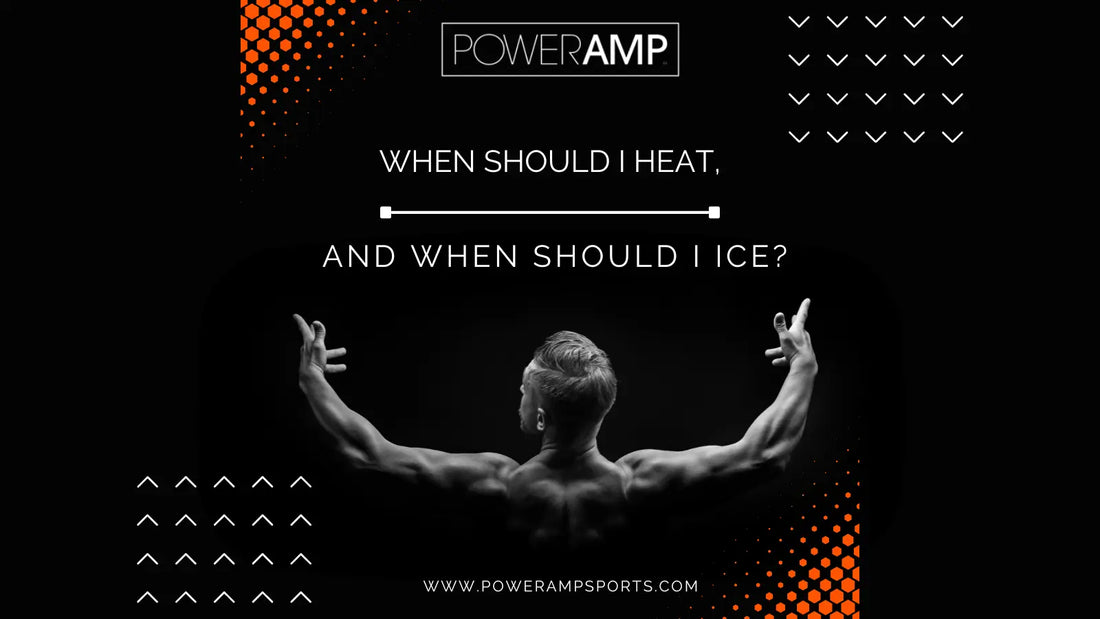When Should I Heat, And When Should I Ice?
It can be challenging to decide when to use heat or ice therapy. Because of this, we have answered the most frequent questions about acute injuries and long-term illnesses below.
Should I apply heat or ice to relieve back pain?
Heat therapy is especially beneficial for chronic conditions, particularly muscle stiffness and soreness. Heating packs may help with localised stiffness, but a warm bath may help with regional stiffness and denser tissues. It is best to use the R.I.C.E. method for the first few days and switch to heat therapy after 72 hours if the lower back pain results from a recent injury, such as a muscle strain.
When I have pulled muscles, should I use heat or ice?
The R.I.C.E. method is the best treatment for pulled muscles. Then, stay away from heat for 72 hours to lessen swelling and inflammation.
Should I treat my swelling with heat or ice?
To reduce swelling, you should start with ice two to three days after an acute injury. Heat can promote blood flow and aid the body's natural healing process. However, using heat too soon might exacerbate swelling by boosting blood flow to the wound.
Should I use heat or ice to treat a sprained ankle?
A sprained ankle can benefit from ice and heat at various times during recovery. The initial course of treatment will primarily consist of rest, ice, compression, and elevation. Then, apply heat straight to the wound to increase blood flow after 48 to 72 hours or when the swelling has sufficiently decreased to speed up healing.
Should I treat my muscle spasms with heat or ice?
Heat therapy increases blood flow, and better circulation may lessen body-wide muscle spasms. Stretching and massage can also help relieve the pain and discomfort a spasmodic muscle brings.
Should I apply heat or ice to relieve neck pain?
Patients wonder whether they should apply heat or ice to their sore neck muscles. Heat therapy should treat neck pain accompanied by generalised muscle soreness, stiffness, or chronic pain. But for the first two or three days after a new injury, you should use the RICE method before moving on to heat therapy.
Should I apply heat or ice for shoulder pain?
Use the RICE technique for new or acute wounds for the first 24 to 72 hours following an injury. After that, heat therapy can help increase blood flow to the area and speed recovery once the swelling has gone down. In addition, heat therapy can relieve the stiffness, aching, and general pain brought on by a chronic condition.
What should I apply to my sore knees?
Your treatment is conditional on whether you choose ice or heat. Applying heat to stimulate blood flow is an option after two or three days of the RICE treatment for acute wounds. Long-term injuries that cause pain, stiffness, and soreness but no swelling may benefit more from heat.
Ease your knee pain, joint pain, and arthritis with heat therapy, which entails applying heat to the affected area through pads or packs or soaking it in warm water. Gel packs may be more effective than regular heat packs because they fit perfectly.
Sports Magnesium
Sports Magnesium is a high-strength, daily formula that contains 145mg of elemental Magnesium per capsule.
Sourced from seawater, this natural marine Magnesium contains no Magnesium oxide, giving it superior absorption and gentleness in the digestive tract.
Magnesium is effective in post-exercise recovery, soothing muscle tension and tightness, and supporting optimal sleep. Magnesium is one of the most important nutrients as it involves hundreds of processes within the body but is easily depleted with exercise.
SHOP NOW: https://bit.ly/sports-magnesium



Leave a reply
Nunc vehicula quam semper odio varius tincidunt. Vestibulum ante ipsum primis in faucibus orci luctus et ultrices posue.
Please note, comments need to be approved before they are published.